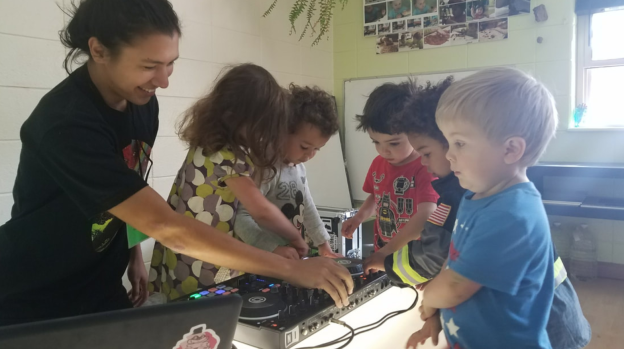ECED 5104 Advanced Developmentally Appropriate Curriculum –
Creating Contextually Meaningful Curriculum
“We do not need to focus solely on the actual succession of facts, but rather to pursue by way of the story, a possible understanding of the intricate adventure of human learning.” – Sergio Spaggiari, Shoe and Meter, Reggio Children

During the Spring semester, Boulder Journey School Teacher Education Program (BJSTEP) graduate students enroll in ECED 5104: Advanced Developmentally Appropriate Curriculum (ADAC). Through the semester, the graduate students engage in curriculum development through action research in order to better understand learning and teaching, documentation as a form of assessment, and partnering with students around the development of a contextually meaningful curriculum. Through this process, they also encounter opportunities for creating impact beyond their classroom walls.
The Course Objectives are as follows:
- Understand how to use a continuous cycle of observation, documentation, interpretation, and provocation to create contextually, meaningful curriculum.
- Understand how to use documentation as a form of assessment with children and self assessment of your teaching practice.
- Synthesize key elements from experiences with children that can be shared with colleagues for further reflection, feedback, and generation of possibilities around new experiences.
- Synthesize key elements from experiences with children that can serve as a form of advocacy for a strong image of children and early childhood education.
- Identify key elements from your observations of children that can be used to propel learning within an emergent, contextualized curriculum.
- Identify and act on opportunities to partner with families in meaningful ways around their participation in the curriculum.
- Identify and act on opportunities to partner with community members and resources in meaningful ways around their participation in the curriculum.
The bulk of the course engages the graduate students in a continuous Cycle of Inquiry guided by the following framework:
- (What) Design and implement experiences that invite students to encounter and explore aspects of a Focus of Research driven by research questions.
- (What) Observe and document these experiences, including preparations for the experiences, using a variety of tools, such as photographs, video, notes, transcribed conversations, charts, graphs and/or samples of work.
- (So What) Analyze documentation from these experiences and generate multiple interpretations and perspectives from these analyses as well as assessments about what students know and understand surrounding research-related material.
- (So What) Seek more knowledge through a variety of resources including current literature, research, interviews and/or TED Talks, etc. and make connections between what is observed and what is learned through these resources to enhance understandings and inform research questions.
- (So What) Synthesize and organize work from each week into a visual format to share with colleagues in class.
- (Now What) Thoughtfully engage colleagues in conversation around work and receive feedback surrounding the experiences offered as well as possibilities for where to go next.
- (What) Based on feedback and ideas generated in class and with instructors, design and implement an experience that invites students to encounter and explore aspects of the Focus of Research driven by research questions. Repeat steps 2-7.

Participation in the ADAC course follows the Developmentally Appropriate Curriculum Course that BJSTEP graduate students are enrolled in during the Fall semester.
Upcoming blog posts will highlight work from the 2017-2018 ADAC course.































You must be logged in to post a comment.